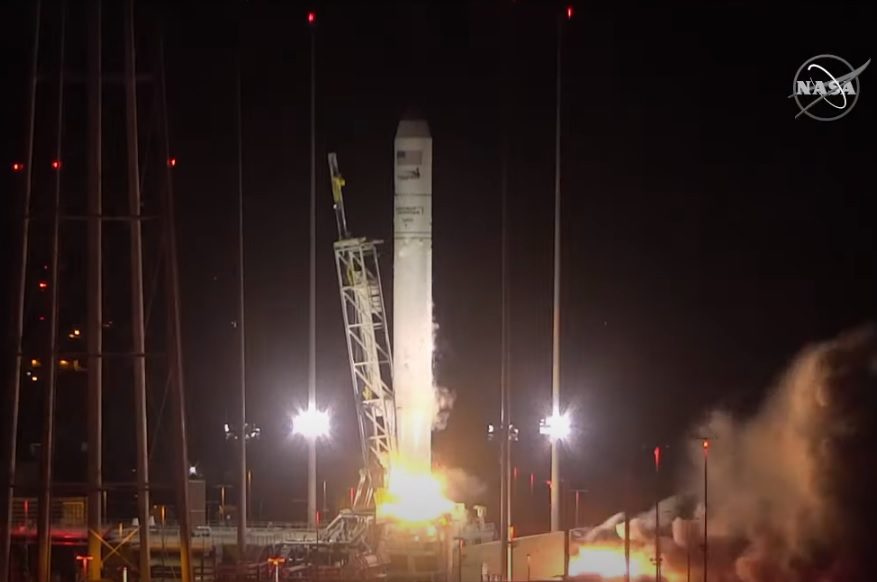In what has been a very strange period for launch delays, multiple US government and commercial satellite launches have been affected by a series of aborts, stand-downs and delays. However, one happened in good time.
Having suffered a weather related delay on 30 September, the Antares 230+ launch of the Cygnus NG-14 (aka Kalpana Chawla) cargo spacecraft to the International Space Station (ISS) found itself delayed again. The launch was called off 2 minutes and 40 seconds before its planned 0138 GMT launch window on 2 October due to an issue with a piece of ground support equipment. That launch did take place successfully however the following day at 0116 GMT on 3 October from the Wallops Island launch site. The flight also carried seven Cubesats, Bobcat, Spoc, Neutron, Descent, Sattla-1, and two Lemurs. Some of these will be released from the ISS, others deployed from the Cygnus once its cargo mission has been completed.
Update on 5 October: ISS Canadarm-2 captured the Cygnus NG-14 spacecraft at 0932 GMT and berthed on the nadir CBM port of the Unity module at 1201 GMT (Times according to Jonathan McDowell).
While that flight did get off the ground, three other launches did not. The most prominent mission delayed was the United Launch Alliance (ULA) operated Delta IV Heavy carrying the secret NRO L-44 mission – thought to be a Mentor-class signals intelligence satellite – for the US National Reconnaissance Office (NRO). This was originally planned to fly in late-August from Cape Canaveral, Florida, but suffered some issues with a ground pneumatic system. However, this was not apparently resolved and caused a formal abort at three seconds before launch on 29 August after a high volumetric flow rate pressure regulator did not open and a warning signal from this prevented the launch. Further attempts in late September (26 – 30 September) were stymied by a gantry retraction issue and then by processing delays related to the hazard of lightning strikes, followed by a hydraulic pipe issue during gantry retraction.
A final launch attempt on 1 October was stopped by a second abort seven seconds before the planned 0354 GMT launch window, caused by a sensor reading on the launch vehicle indicating there was a problem. While the pad ignitors were lit, the in chamber ignitors were not and there was no ignition of the main or booster engines. The launch, which held up other launches at Cape Canaveral due to range availability including the SpaceX Falcon 9 flights mentioned below, is now set for circa 8 September.
Having been delayed by weather conditions in late September and early October, the planned 3 October Falcon 9 launch of the GPS III-4 navigation satellite for the US Air Force (now the US Space Force) was aborted at L-2 seconds before the 0143 GMT Launch Window. The abort was caused by an unexpected pressure rise in the turbomachinery gas generator. (The fault was later traced to protective lacquer blocking a relief valve on the gas generator). Another attempt is to be made in late October.
A Falcon 9 launch of 60 Starlink satellites was delayed in September by rough seas preventing the drone ship barges being in position for the first stage recovery attempt, then later by poor weather at the pad. However, that launch suffered its own abort 18 seconds before the 1317 GMT planned launch time at Cape Canaveral due to a ground sensor issue. This mission has continued to suffer weather-related delays since the start of October but did eventually fly on 6 October.
Matt Wilson contributed to this story.








